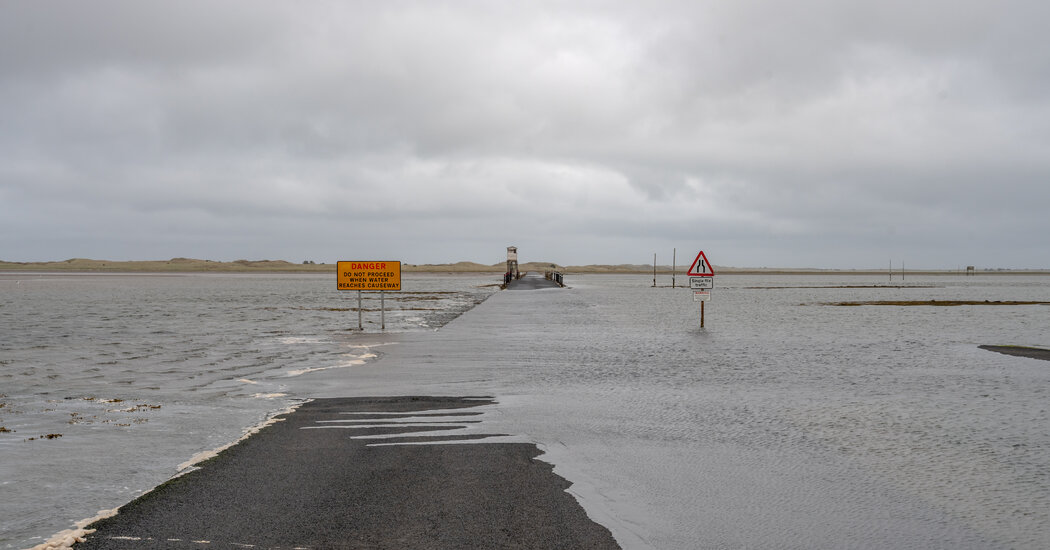HOLY ISLAND, England — The off-duty police officer was confident he could make it back to the mainland without incident, despite islanders warning him not to risk the incoming tide.
“Nah,” the officer was reported to have said. “That’s just to frighten the tourists.”
About a half-hour later, he “was standing on the roof of his VW Golf car with a rescue helicopter above him, with a winch coming down to scoop him, his wife and his child to safety,” said Ian Clayton, from the Royal National Lifeboat Institution, a nonprofit organization whose inflatable lifeboat is often called on to rescue the reckless.
Few events in life are as certain as the tide that twice daily cascades across the causeway that connects Holy Island with the English coastline, temporarily severing its link to the mainland.
Yet for some, it still manages to come as a surprise.
Growing numbers of visitors have been stranded in waterlogged vehicles on the mile-long roadway that leads to Holy Island, also known as Lindisfarne.
Some manage to escape their cars and scramble up steps to a safety hut perched above sea level, while others seek shelter from the chilly rising waters of the North Sea by clambering onto the roofs of their vehicles.
Most feel a little foolish having driven past a variety of signs, including one with a warning — “This could be you” — beneath a picture of a half-submerged SUV.
While no one has drowned in recent memory, the increasing number of emergencies is alarming to those who respond to the rescue calls. It is also a point of frustration.
“It’s so predictable: If you have got a high tide mid- to late afternoon — particularly if it’s a big tide — you can almost set your watch by the time when your bleeper is going to go off, asking you to go and fish someone out,” Mr. Clayton said, standing outside the lifeboat station at the fishing village of Seahouses on the mainland and referring to the paging device that alerts him to emergencies.
In addition to the off-duty police officer rescued several years ago, others who have been saved from the causeway tide, Mr. Clayton said, have included a Buddhist monk, a top executive from a Korean car company, a family with a newborn baby and the driver of a (fortunately empty) horse trailer.
The one thing they all had in common was their desire to visit a scenic island regarded as the cradle of Christianity in northern England.
Irish monks settled here in A.D. 635, and the eighth-century Lindisfarne…
Click Here to Read the Full Original Article at NYT > Travel…
